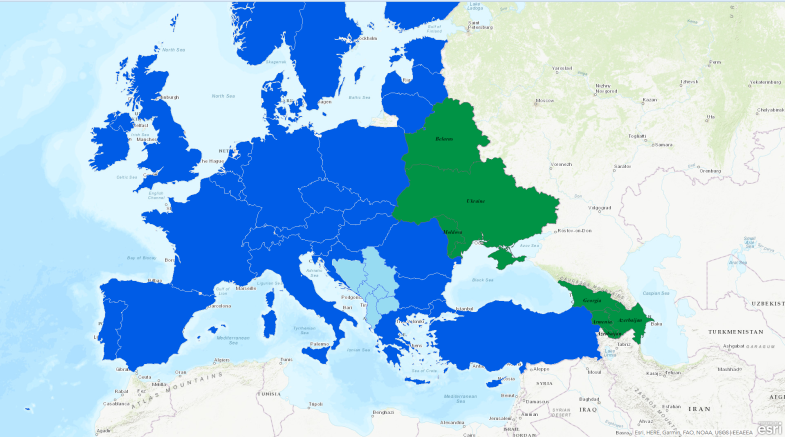ENI SEIS II East project

Objective
The ENI-SEIS East project (2017-2018) primarily aims at helping partner countries gradually develop and extend their national environmental information systems in line with the SEIS principles in terms of institutional cooperation, content and infrastructure. The geographical area covered by the project includes Armenia, Azerbaijan, Belarus, Georgia, Moldova and Ukraine from the Eastern region of the European Neighbourhood Policy (ENP).
The overall content objective of the ENP is to strengthen environmental monitoring and information management based on the SEIS principles. In that direction, 36 indicators as the set of regional environmental indicators (13 different water quality and water quantity related indicators) have been proposed by the UNECE Working Group on Environmental Monitoring and Assessment (WGEMA) and Joint Task Force of Indicators following EEA model.
Background
Water management including marine environment – the Black Sea- has been defined one of the thematic priorities by the countries in the framework of the cooperation under the ENI-SEIS East project. The ENI-SEIS East project aims to support developing SEIS monitoring mechanism and implementing regionally comparable indicators to support the knowledge-based policy process. This process should be underpinned by developing harmonized data, implementing regularly updated and comparable indicators and undertaking national and regional integrated assessment on water resources. The outputs of the first online survey on indicators with the websites of the national statistical agencies and/or Ministries of Environment of ENI East countries have been shown that almost all UNECE core set of 36 environmental indicators have already been implemented in Armenia, Ukraine, Moldova, Azerbaijan and Belarus. However, further improvements are needed to improve the quality of the indicators in line with the EEA/EIONET practices to better support to national and regional policy processes.
Sharing water data and information between national entities as well as between national and international institutions is the key for supporting the development with SEIS in the region. The experience gained by the ETC in collecting and providing environmental information in Europe with the help of its European environment information and observation network (Eionet) should be used. Particularly, Reportnet as common infrastructure and tool between the EEA and its member countries for sharing the data and information as well as WISE as single entry point of accessing to harmonized data, water indicators, policy documents are already a good examples of how the SEIS principles are implemented at the National and regional scales. In addition, the ETC has also experiences on implementing the water asset accounts and flow accounts which should be used in developing the water quantity related indicators and assessment.
Project outcomes
The ETC/ICM (UFZ with the ETC partners TcVode, Cenia, NTUA and NIVA) provides capacity building in the respective countries for implementing the selected water related indicators at the regional and national level in line with international standards and guidelines and also support the potential development of the online data and indicator management:
- Production of comparable indicators on the use of freshwater resources across the Region in line with the harmonized methodologies.
- Implementing the indicators of nutrients in freshwater and BOD and concentration in ammonium as pilot for demonstrating the data sharing and integration between at the national level with a view of supporting the development of shared national water information system (WISE).
- Creating also synergies with other international activities and projects e.g. Black Sea Information System (BSIS), EU WI+ UNDP-GEF etc. to support the improvements in the country capacities in meeting the international reporting obligations.
